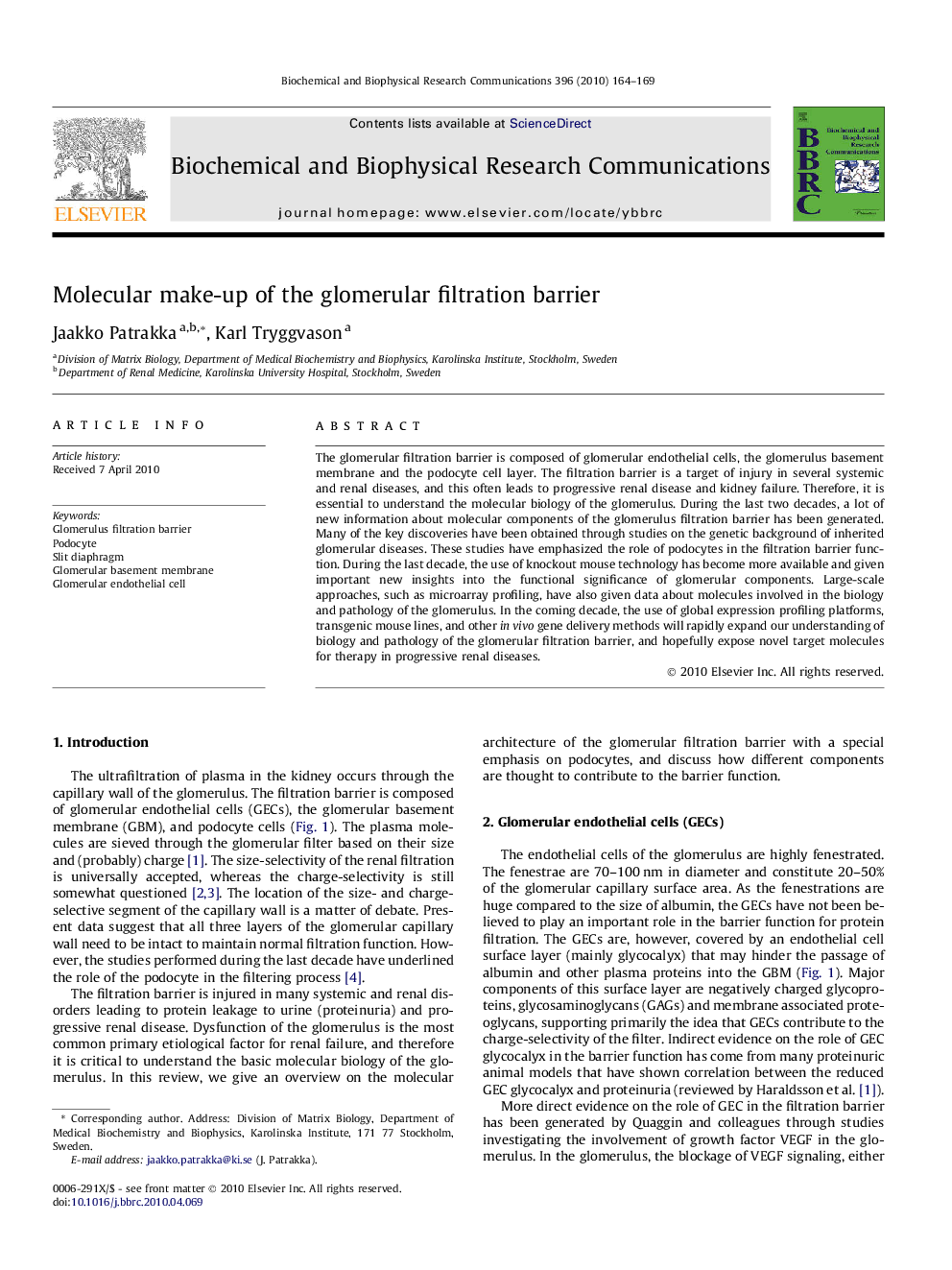| Article ID | Journal | Published Year | Pages | File Type |
|---|---|---|---|---|
| 1932181 | Biochemical and Biophysical Research Communications | 2010 | 6 Pages |
The glomerular filtration barrier is composed of glomerular endothelial cells, the glomerulus basement membrane and the podocyte cell layer. The filtration barrier is a target of injury in several systemic and renal diseases, and this often leads to progressive renal disease and kidney failure. Therefore, it is essential to understand the molecular biology of the glomerulus. During the last two decades, a lot of new information about molecular components of the glomerulus filtration barrier has been generated. Many of the key discoveries have been obtained through studies on the genetic background of inherited glomerular diseases. These studies have emphasized the role of podocytes in the filtration barrier function. During the last decade, the use of knockout mouse technology has become more available and given important new insights into the functional significance of glomerular components. Large-scale approaches, such as microarray profiling, have also given data about molecules involved in the biology and pathology of the glomerulus. In the coming decade, the use of global expression profiling platforms, transgenic mouse lines, and other in vivo gene delivery methods will rapidly expand our understanding of biology and pathology of the glomerular filtration barrier, and hopefully expose novel target molecules for therapy in progressive renal diseases.
